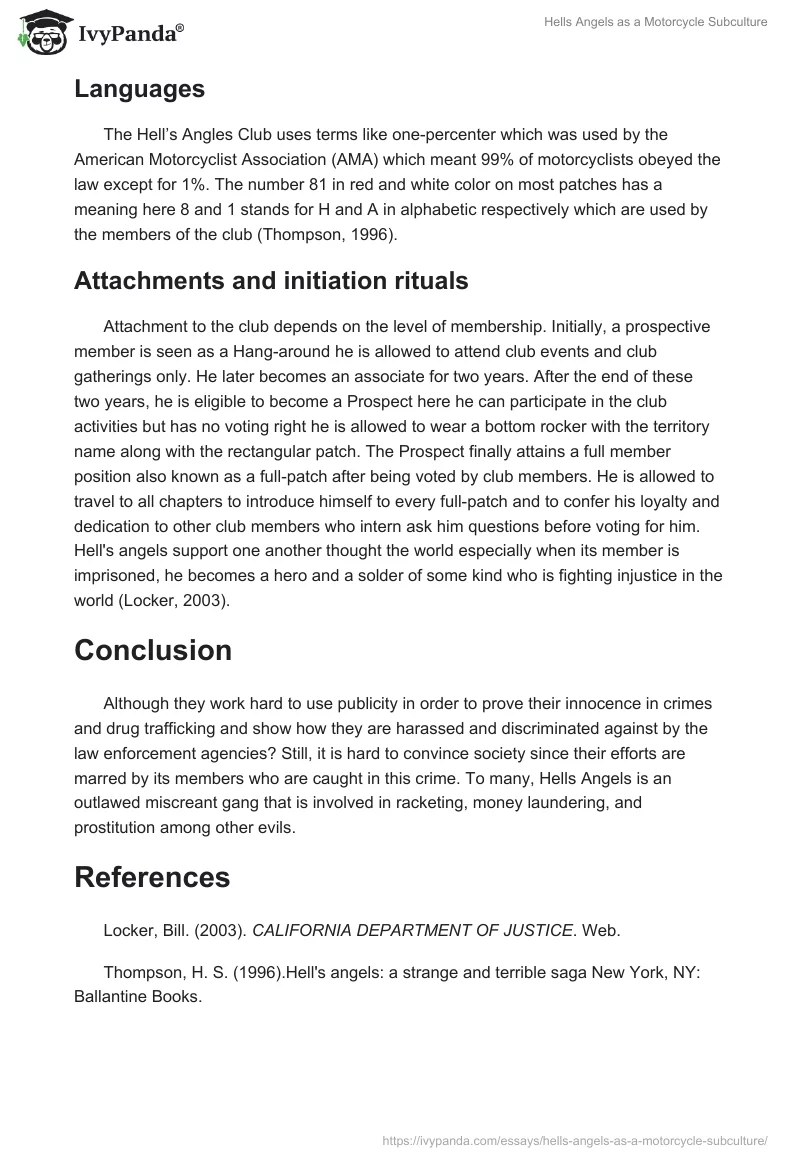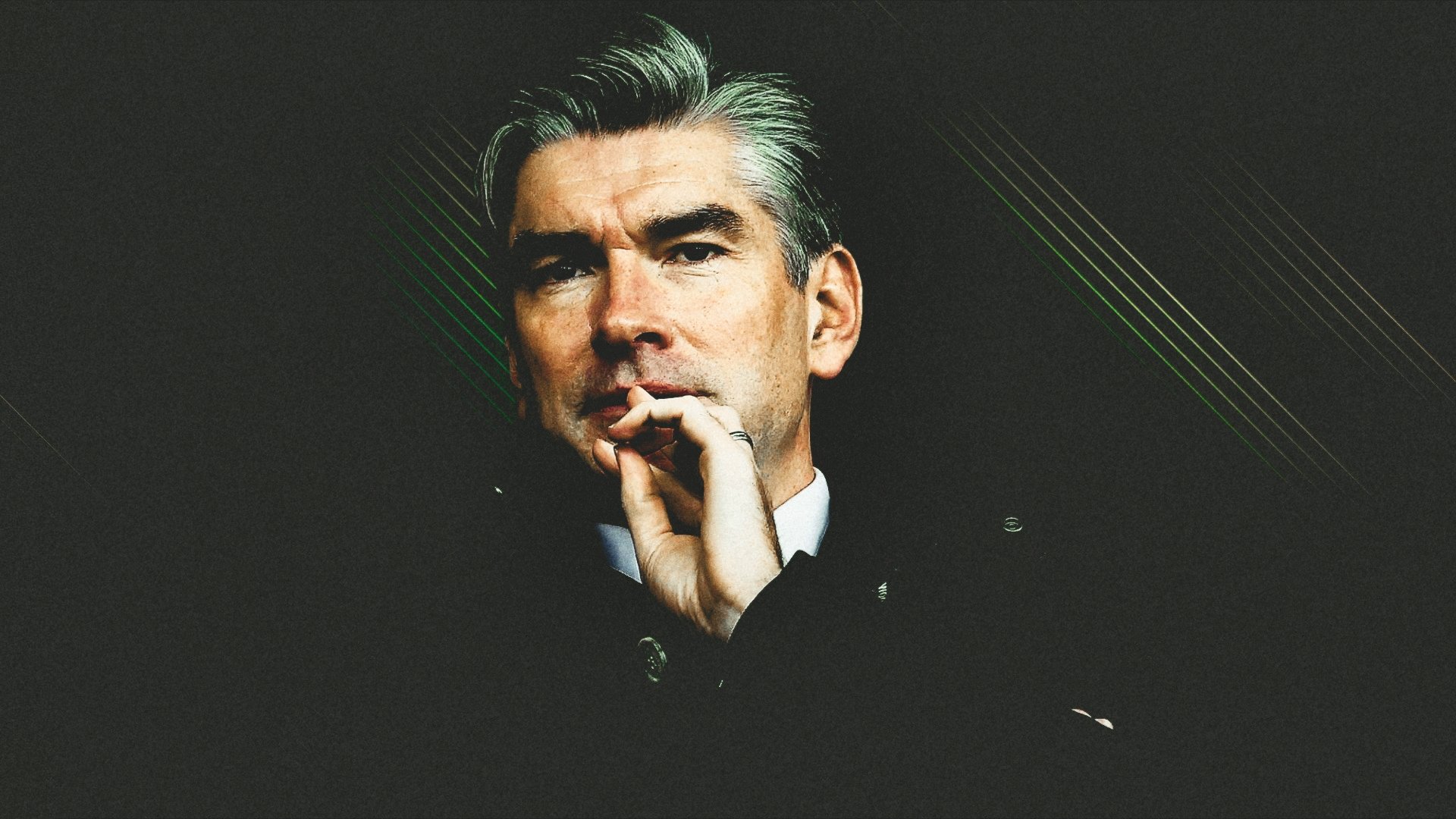Exploring The Hells Angels Subculture

Table of Contents
A History of the Hells Angels Motorcycle Club
The Hells Angels Motorcycle Club, a name synonymous with rebellion and biker culture, boasts a history as turbulent as its reputation. Its origins trace back to the post-World War II era in 1948, emerging from the burgeoning motorcycle club scene in California. The early years saw a loose confederation of riders, gradually solidifying into the structured organization we recognize today. The club's early growth was fueled by a sense of camaraderie among veterans, a shared love of motorcycles, and a rejection of mainstream society.
- Founding Members: While pinpointing the exact founders remains debated, figures like Arvid Olsen are often cited as instrumental in the club's early formation.
- Early Chapters: The initial chapters were primarily located in California, slowly expanding their reach across the United States and eventually internationally.
- Significant Events: Key events, including internal conflicts, clashes with law enforcement, and territorial disputes, shaped the club’s identity and contributed to its notorious reputation.
- Expansion: The Hells Angels Motorcycle Club's expansion across regions involved both organic growth and strategic recruitment, establishing a complex network of chapters worldwide.
The Hells Angels Lifestyle and Code
The Hells Angels lifestyle is intrinsically tied to their motorcycle culture. The iconic Harley-Davidson motorcycles are more than mere machines; they are symbols of freedom, rebellion, and brotherhood. This lifestyle is governed by an intricate hierarchy and a strict code of conduct, emphasizing loyalty, secrecy, and a strong sense of belonging.
- Motorcycle Culture: The deeply ingrained motorcycle culture permeates every aspect of the Hells Angels’ identity, influencing their rituals, their fashion, and their social interactions.
- The "1%" Philosophy: The adoption of the "1%" moniker signifies their rejection of mainstream society and their embrace of a counter-cultural identity, solidifying their image as outlaws.
- Membership Requirements: Membership is highly selective and involves a rigorous initiation process, reinforcing the exclusivity and the strong bond among members.
- Patches and Insignia: Their distinctive patches and insignia, known as "colors," are deeply symbolic, representing their chapter affiliation and status within the club's hierarchy. These symbols play a crucial role in their identity and their public image.
- Internal Rules and Regulations: A strict internal structure, complete with hierarchical ranks and regulations, governs the club's activities and ensures order and loyalty.
Criminal Activities and Controversies Associated with the Hells Angels
The Hells Angels Motorcycle Club has a long and documented history of involvement in criminal activities, leading to numerous legal battles and controversies. Their activities have ranged from drug trafficking and violence to extortion and money laundering. This has resulted in a complex and often negative public perception.
- Specific Instances of Criminal Activity: Numerous high-profile cases, extensively documented in legal records and media reports, illustrate the club’s involvement in various criminal enterprises (citations needed).
- Legal Cases and Rulings: The club has faced countless legal challenges, resulting in convictions, acquittals, and ongoing investigations, shaping the public narrative surrounding their activities.
- Public Opinion and Media Representation: The media’s portrayal of the Hells Angels has often focused on their criminal activities, contributing to a negative and often sensationalized public image.
- The Ongoing Debate on Their Image: The ongoing debate about their image highlights the complexities of understanding the Hells Angels: are they a brotherhood of motorcycle enthusiasts or a criminal organization?
The Hells Angels Subculture in Popular Culture
The Hells Angels' image has transcended the realm of biker culture, becoming a significant part of popular culture, frequently depicted in books, films, and music. This portrayal, however, often presents a romanticized version, contrasting sharply with the realities of their activities.
- Notable Examples in Popular Culture: From iconic films to best-selling books and popular songs, the Hells Angels' imagery has seeped into popular culture.
- Analysis of Their Image: The depictions often showcase a romanticized version, focusing on rebellion and freedom, while ignoring the criminal elements.
- Impact on Fashion Trends: The Hells Angels' style, with its leather jackets and distinctive patches, has influenced fashion trends across various subcultures.
- The Influence on the Biker Subculture: Their influence extends to the larger biker subculture, shaping its image and popular perception.
Conclusion
Understanding the Hells Angels subculture requires a careful examination of its multifaceted nature. This article has explored their history, showcasing their evolution from post-war biker club to a globally recognized organization; examined their lifestyle, highlighting the importance of brotherhood and motorcycle culture; investigated their involvement in criminal activities and the ensuing legal battles; and analyzed their lasting impact on popular culture. The complexities and contradictions inherent in this group demand a nuanced approach, moving beyond simple labels and recognizing the diverse perspectives surrounding the Hells Angels Motorcycle Club. Further research into the Hells Angels subculture is encouraged to gain a deeper and more comprehensive understanding of this multifaceted organization. Explore reputable sources and critically analyze the information available to develop a well-informed perspective on the Hells Angels Motorcycle Club and its ongoing influence. Continue exploring the complexities of the Hells Angels subculture and contribute to informed discussions about their impact.

Featured Posts
-
 Kazuo Ishiguro How Memory Shapes Identity And Narrative
May 26, 2025
Kazuo Ishiguro How Memory Shapes Identity And Narrative
May 26, 2025 -
 The China Us Trade Truce A Boon For Exporters
May 26, 2025
The China Us Trade Truce A Boon For Exporters
May 26, 2025 -
 Naomi Kampel Stis Maldives Apolaystikes Diakopes Sta 54 Tis Me Ta Paidia Tis
May 26, 2025
Naomi Kampel Stis Maldives Apolaystikes Diakopes Sta 54 Tis Me Ta Paidia Tis
May 26, 2025 -
 Qui Est Melanie Thierry Biographie Et Filmographie
May 26, 2025
Qui Est Melanie Thierry Biographie Et Filmographie
May 26, 2025 -
 Celebrities And The La Palisades Fires Homes Destroyed And Losses Reported
May 26, 2025
Celebrities And The La Palisades Fires Homes Destroyed And Losses Reported
May 26, 2025
Latest Posts
-
 Rayan Cherki To Liverpool Lyon Stars Transfer Speculation Heats Up
May 28, 2025
Rayan Cherki To Liverpool Lyon Stars Transfer Speculation Heats Up
May 28, 2025 -
 Manchester Uniteds Strong Lead In The Race For Rayan Cherki
May 28, 2025
Manchester Uniteds Strong Lead In The Race For Rayan Cherki
May 28, 2025 -
 Liverpool Linked With Rayan Cherki Lyon Exit Imminent
May 28, 2025
Liverpool Linked With Rayan Cherki Lyon Exit Imminent
May 28, 2025 -
 Man United Leads Liverpool In Pursuit Of Rayan Cherki
May 28, 2025
Man United Leads Liverpool In Pursuit Of Rayan Cherki
May 28, 2025 -
 25 Million Player Liverpool Transfer Battle With Manchester United
May 28, 2025
25 Million Player Liverpool Transfer Battle With Manchester United
May 28, 2025
